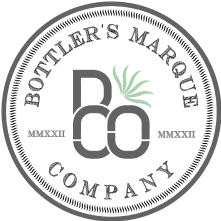Origins of Rum

Without digging deeply into the history and geographical origins of rum, a couple of points become immediately clear. First, in the Caribbean, where rum was first commercialised, there is no avoiding rum’s historical association with the use of enslaved agricultural workers transported from African nations to harvest its sugarcane ingredients—an awful historical fact with consequences and debates still playing themselves out today.
Second, it becomes clear there is a surprising and continuing debate regarding the origins of rum – particularly that the Caribbean may not have been where rum originated, despite its being first commercialised there. Whether those who claim that rum was first produced in the Caribbean are correct, or those who argue it was in South East Asia (where sugarcane is considred a native species) are right, at some point people in both regions discovered that by allowing pressed sugar cane juice or molasses to ferment, you could then distill that fermented liquid to produce a potent and flavourful spirit.
Raw Ingredients Used in Making Rum


The type of raw ingredients used plays a significant role in defining the character of rum that is produced. Traditionally, sugarcane molasses is the most common base ingredient for rums sold in English-speaking markets, but some rums are made from fresh pressed sugarcane juice, which certain French territories call “Agricole” rum (rhum). The type of sugarcane used, the soil it’s grown in, and the climate of the region all contribute to the flavour profile of the final product (which the French refer to as the ‘terroir’ of the rum).
Styles of Rum
Traditionally there are two methods to classify the different styles of rum. The first refers to rums as being English, French or Spanish in style—linking a rum’s raw materials and production methods to distinct flavor profiles established over centuries by these three primary rum consuming nations. While still a valid way to classify rums and still used by many, UK rum enthusiasts are now seeking much more detailed and nuanced information about the rums they wish to consider purchasing beyond these traditional historical-style classifiers.
The second traditional method for classifying commercial rum is based on referring to the colour of the rum. This system – while still being used by volume producers – is now morphing to add additional information like length of ageing, and whether rums have been through any filtration (which can remove colour from aged rums, for example). Drawing on this second classifying system rather than the first, here are the four primary styles of rum available in the UK today:

1. White/Unaged/’New Make’ Rum: traditionally considered the lightest style of rum, and ideal for cocktails. This style of rum is often unaged, or aged for only a short period, resulting in a clean and crisp spirit. If a ‘white’ rum has been aged in oak barrels, the ‘white’ (clear) colour is achieved by charcoal filtering, which removes any colour that the rum had gained from its time in the oak casks.
2. Gold/Amber/Lightly-Aged Rum: Aged for a longer duration in oak barrels, gold rums acquire a richer color and more complex flavors from the spirit’s interaction with the wooden casks. This style may be enjoyed both neat and in cocktails like the classic Mai Tai.
3. Dark/Aged Rum: These rums spend extended periods aging in charred oak barrels, developing deep, robust flavors with notes of caramel, vanilla, and spices. With all-natural aged rums, the dark colour comes exclusively from the wood. For other commercial rums, caramel colour is added to the rum to achieve the desired darker hues. Aged rums are increasingly sipped slowly to savor their complexity, which is often achieved by ageing in casks that have previously held other spirits such as bourbon and cognac, or fortified wines like sherry and Madeira.

4. Spiced Rums: A recent modern invention, spiced rums are infused with spices and herbs like cinnamon, clove, and vanilla, offering a bold and aromatic experience. These rums can be spiced entirely using natural aromatic ingredients, or by using extracts and even artificial flavourings to achieve the desired spice profile. Spiced rums are commonly used in cocktails and make for delightful winter warmers.
Methods of Distillation


The method or methods of distillation significantly influence a rum’s character. There are two primary methods, and a number of hybrid versions of the two:
1. Pot Still Distillation: This traditional method imparts a rich and full-bodied character to rum. It requires batch-based distillation (like traditional whisky pot stills), often used by more artisan and premium distilleries, resulting in complex and flavorful spirits.
2. Column Still (Coffey Still) Distillation: Also known as continuous distillation, this method produces lighter and more neutral spirits. It is favored by larger-volume rum producers for its efficiency and consistency.
Unique Characteristics of Rums from the Pacific
The unique dimensions of rums from various Pacific regions come through in the aroma, nose, flavour palette, and finish with four key differentiators.
1. Sugarcane Varieties: Asian rums often use unique sugarcane varieties found in the region, such as those found in Thailand, Vietnam and Japan, which create distinct rum flavour profiles. Thai rums, for instance, are known for their floral and fruity notes.
2. Yeasts: Different wild and cultivated yeasts exist in Asia that bring unique flavour profiles during fermentation. In Japan, for example, some craft distillers are using yeasts traditionally employed for sake to make rums never before seen or enjoyed.
3. Climate Influence: The tropical climate of many nations in the Pacific accelerates the aging process, resulting in rums that mature more quickly in casks and develop intense flavors. This is particularly evident in rums from countries like the Philippines, Hawaii and Fiji.
4. Local Ingredients: Asian spiced rums frequently incorporate local ingredients like exotic fruits, herbs, flowers and teas, adding layers of complexity and regional flair to their profiles. Laos rum, for instance, may feature spices like ginger and pepper.
*In some rum circles and by traditional thinking, Pacific rums are often labelled as ‘non-traditional’ in terms of geographical origin. The quiet revolution in rum is steadily moving past these geographical confines in the same way rum is no longer considered just a cocktail ingredient. Besides, some argue South East Asia was the true birthplace of rum anyhow, before the Caribbean! Heresy? Or part of an expanding appreciation of the category

